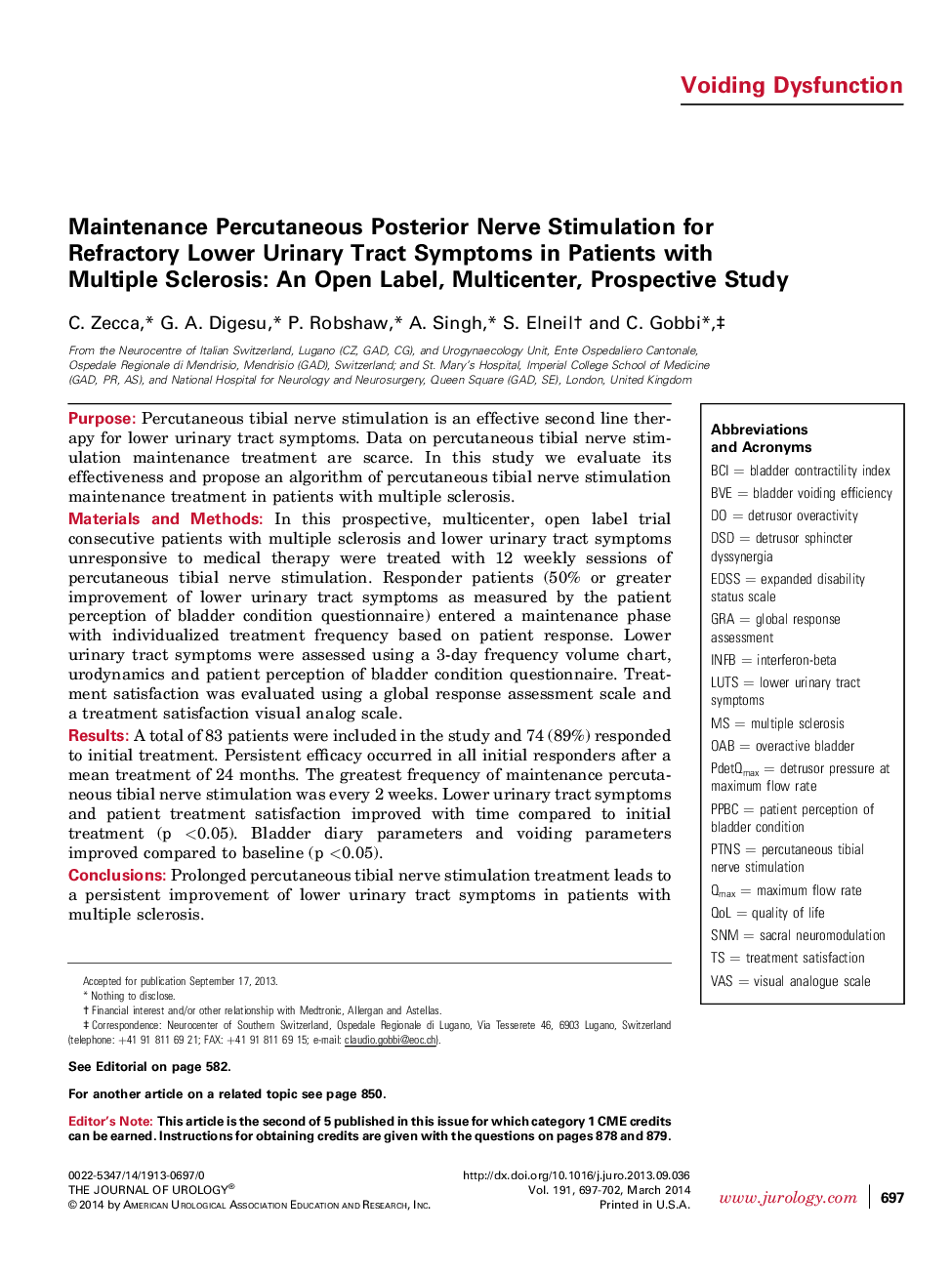| کد مقاله | کد نشریه | سال انتشار | مقاله انگلیسی | نسخه تمام متن |
|---|---|---|---|---|
| 3862705 | 1598908 | 2014 | 6 صفحه PDF | دانلود رایگان |
PurposePercutaneous tibial nerve stimulation is an effective second line therapy for lower urinary tract symptoms. Data on percutaneous tibial nerve stimulation maintenance treatment are scarce. In this study we evaluate its effectiveness and propose an algorithm of percutaneous tibial nerve stimulation maintenance treatment in patients with multiple sclerosis.Materials and MethodsIn this prospective, multicenter, open label trial consecutive patients with multiple sclerosis and lower urinary tract symptoms unresponsive to medical therapy were treated with 12 weekly sessions of percutaneous tibial nerve stimulation. Responder patients (50% or greater improvement of lower urinary tract symptoms as measured by the patient perception of bladder condition questionnaire) entered a maintenance phase with individualized treatment frequency based on patient response. Lower urinary tract symptoms were assessed using a 3-day frequency volume chart, urodynamics and patient perception of bladder condition questionnaire. Treatment satisfaction was evaluated using a global response assessment scale and a treatment satisfaction visual analog scale.ResultsA total of 83 patients were included in the study and 74 (89%) responded to initial treatment. Persistent efficacy occurred in all initial responders after a mean treatment of 24 months. The greatest frequency of maintenance percutaneous tibial nerve stimulation was every 2 weeks. Lower urinary tract symptoms and patient treatment satisfaction improved with time compared to initial treatment (p <0.05). Bladder diary parameters and voiding parameters improved compared to baseline (p <0.05).ConclusionsProlonged percutaneous tibial nerve stimulation treatment leads to a persistent improvement of lower urinary tract symptoms in patients with multiple sclerosis.
Journal: The Journal of Urology - Volume 191, Issue 3, March 2014, Pages 697–702
